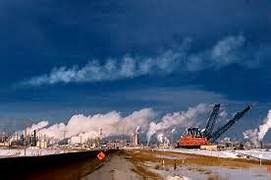The Alberta oil sands have long been a symbol of economic opportunity, attracting thousands of workers from across Canada and beyond. With high-paying jobs and a demand for long hours in isolated work camps, the oil sands industry has become a magnet for those seeking financial security. However, beneath this prosperity lies a growing crisis—substance abuse and addiction are taking a heavy toll on workers, families, and communities.
The Perfect Storm: Stress, Isolation, and Addiction
Life in the oil sands is far from easy. Workers endure grueling 12-hour shifts, often working for weeks at a time before returning home. Many live in remote work camps with few recreational opportunities, creating a culture of isolation and loneliness. The physical demands, combined with extreme weather conditions and the pressure to perform, can lead many to seek escape through drugs and alcohol.
Substance use often starts as a way to cope with stress, exhaustion, and mental health struggles. Stimulants like cocaine and methamphetamine help workers stay awake and alert during long shifts, while opioids and alcohol are used to unwind after work. Over time, casual use can spiral into full-blown addiction, affecting job performance, relationships, and overall well-being.
The Prevalence of Substance Abuse in the Oil Sands
Reports have shown that drug and alcohol abuse is disproportionately high in Alberta’s oil industry. According to a 2019 study, nearly one in three workers in the oil and gas sector reported problematic substance use. The availability of drugs in and around work camps has increased, with organized crime networks exploiting the high wages and demand for illicit substances.
Prescription opioid addiction is also a growing concern. Many workers suffer from chronic pain due to physically demanding jobs and may initially receive painkillers like OxyContin or fentanyl through legal prescriptions. However, opioid dependence can quickly develop, leading some to seek out street drugs when prescriptions run out. The rise of fentanyl-laced substances has further fueled overdose deaths in the region.
The Impact on Workers and Communities
The consequences of substance abuse in the oil sands extend beyond individual workers. Increased addiction rates contribute to higher workplace accidents, absenteeism, and job losses. In safety-sensitive environments like oil extraction and transportation, impaired workers pose a serious risk to themselves and their colleagues.
Beyond the worksite, addiction has devastated local communities. Fort McMurray, the heart of Alberta’s oil industry, has seen rising crime rates, homelessness, and overdose deaths linked to drug use. Families of oil sands workers often suffer as well, dealing with financial instability and emotional distress caused by a loved one’s addiction.
Addressing the Crisis
Tackling substance abuse in Alberta’s oil sands requires a multi-faceted approach. Employers must invest in better mental health support, harm reduction strategies, and confidential treatment options. Governments and community organizations should expand access to addiction recovery services and promote public awareness campaigns to reduce stigma.
While the oil sands industry continues to fuel Canada’s economy, it is clear that the human cost of addiction cannot be ignored. A proactive response is needed to protect workers, their families, and the future of Alberta’s resource sector.
